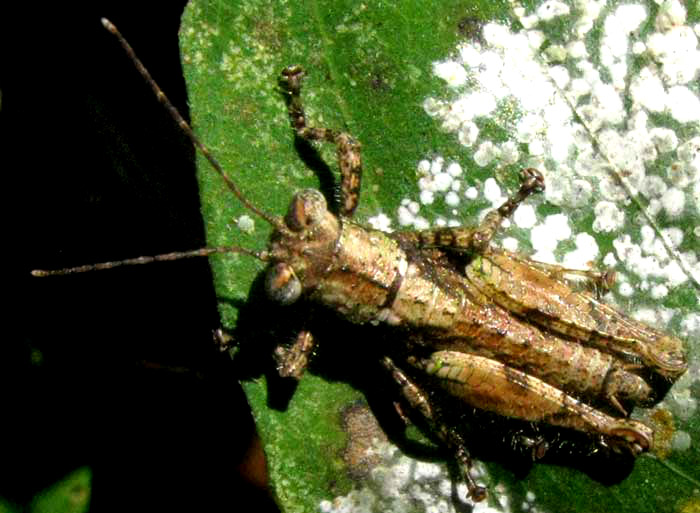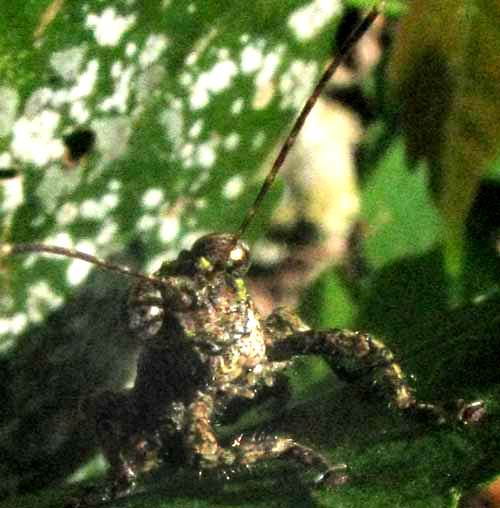Excerpts from Jim Conrad's
Naturalist Newsletter

from the February 12, 2012 Newsletter issued from Hacienda Chichen Resort beside Chichén Itzá Ruins; limestone bedrock; elevation ~39m (~128ft), N20.675°, W88.569°; central Yucatán state, MÉXICO
LUBBER GRASSHOPPER
The other day on a lichen-splattered leaf in a mostly shaded and damp thicket near the hut I saw what's shown above. That smallish grasshopper with such bulging eyes and massive back-legs is one of the most unusual I've seen. You want to call it a frog-grasshopper. A shot from the front shows a face that somehow looks a bit primitive and slow-witted. You can see what I mean below:

Despite the face, when the critter got enough of my botherings, his decisive, leaf-thumping leap came with impressive power and quickness.
Like me, volunteer identifier Bea in Canada hadn't seen anything like this, so she shipped the image to her grasshopper expert, Dave J. Ferguson, Contributing Editor at Bugguide.net. Dave studied the matter a few days before deciding that it looked like CRISTOBALINA SELLATA, a member either of the family Acrididae or the Romaleidae, depending on whether the latter family is separated from the former.
The Internet turns up almost nothing about this species. However, one paper says that members of the family Romaleidae are known as Lubber Grasshoppers. That fine word "lubber" is applied to clumsy people such as awkward sailors who are landlubbers. The term derives from the Middle English "lobur," meaning "lazy lout," and came into English from Scandinavian languages spoken by the Vikings who invaded and occupied England so successfully that English was changed and enriched forever.
Anyway, members of the Romaleidae are described as "often sluggish, have chemical defenses, are highly diverse, and found throughout the New World."
What a pleasure to document this obscure, curious-looking little creature here in the Yucatán!